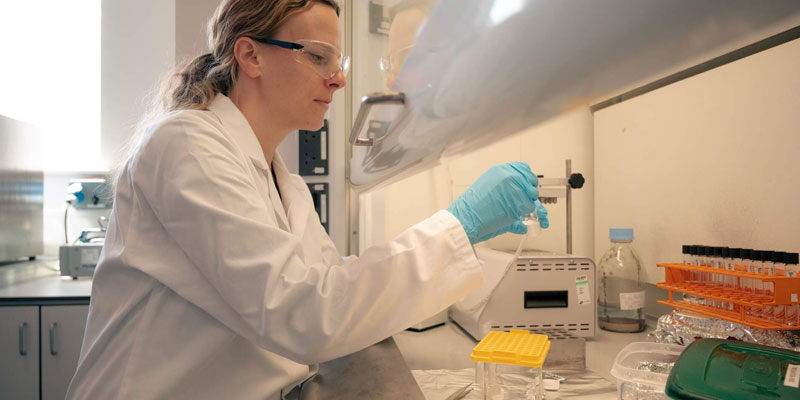Major new AHRC initiative to include two projects at York
Two major projects in the Department of Archaeology will form part of a new national infrastructure for Heritage Science.

Two major projects in the Department of Archaeology will form part of an £80m initiative being launched by the AHRC to bolster infrastructure for scientific analysis of our national heritage.
Boosting
The Heritage Science Data Service (HSDS) and the Biomolecular tools for Archaeological Conservation and Heritage Science (BIOARCH-HS) projects will form part of the RICHeS initiative, which comprises 31 projects at institutions across the UK, aimed at safeguarding heritage for future generations and boosting the UK’s heritage economy.
A team from the University’s BioArCh centre, led by Oliver Craig will manage BIOARCH-HS, whilst a team from the Archaeology Data Service, led by Julian Richards will be responsible for setting up the HSDS.
Professor Craig, said he believed that BioArCh's two decades of experience in cutting-edge archaeological science played a major part in its being selected to be part of the RICHeS project, and he explained the impact BIOARCH-HS will have.
He said: “Our aim is to dramatically increase the UK’s capacity in biomolecular archaeology by expanding our facilities and automating workflows in order to create a unique service for the heritage science community, which includes archaeological field units, museums and other academic institutions.
“We will expand our clean rooms, automate our laboratory procedures, and enhance our sample tracking, data management and reporting systems. These measures will enable us to scale up our operations to meet the anticipated demand from a wide range of users.”
Vital
Professor Richards says the HSDS - which is worth over £14m over five years - will act as a vital hub for researchers requiring data, in effect providing a ‘one-stop-shop’ for hard to find information.
"The HSDS provides the backbone for RICHeS and the first point of call for researchers and other users to find and contact UK organisations where they can find facilities, equipment, reference collections and datasets," he says.
“We’re bringing together key UK heritage bodies covering England, Scotland and Wales, including the British Museum, British Geological Survey, National Gallery, The National Archives, Natural History Museum, Historic England, Historic Environment Scotland, and Museum Wales.”
Support
He added the HSDS will also support European initiatives such as the European Research Infrastructure for Heritage Science (E-RIHS), European Collaborative Cloud for Cultural Heritage (ECCCH) and European Open Science Cloud (EOSC).
The RICHeS programme is funded by an £80 million investment from the UKRI Infrastructure Fund and delivered by AHRC.
Professor Christopher Smith, AHRC's executive chair, said: “The UK has a rich and unparalleled cultural heritage and is a global leader in the science of heritage conservation. By investing in heritage science, we are not only unleashing new understanding about our cultural assets but boosting a world-leading heritage economy that will benefit us all.
“With 31 sites across all four devolved administrations and a network of 117 partners in three continents, RICHeS is UKRI’s largest distributed infrastructure and an undisputed world-first. It is an example of how AHRC works at the heart of UKRI to drive interdisciplinary science which benefits citizens, society and the economy.”